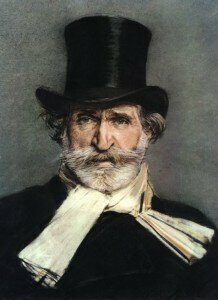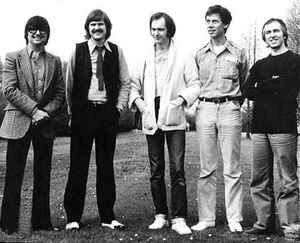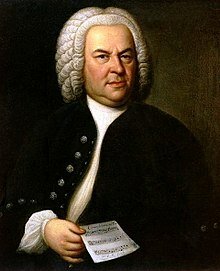
Little Glee Monster
© i1.jpopasia.com
In the modern world, we’re surrounded by sound. Luckily, in the 21st century, unless you run into a jack hammer or other industrial sound, we can choose our own soundtrack. You can listen only to the most arcane of musical genres or go with the wide range of everything available today.
Let’s look at classical music and where it shows up in Pop music. We were watching NHK, the Japanese national news channel, and up popped a song sung by Little Glee Monster. This five-voice J-Pop ‘girl’ group is known for their close harmony singing and in ‘Jupiter’ they even start out as an unaccompanied ensemble. Can you recognize the music?

Gustav Holst
© www.holstfoundation.org
Holst: The Planets, Op. 32: IV. Jupiter, the Bringer of Jollity (Stuttgart Radio Symphony Orchestra; Roger Norrington, cond.)
The start to the English pop group Take That’s 2009 hit “Never Forget” was the equally unforgettable start to Giuseppe Verdi’s “Tuba Mirum” section of his Requiem Mass. The mass text, “The trumpet, scattering a wondrous sound, through the sepulchres of the regions, will summon all before the throne,” or in this case all before the stage for the performance of “Never Forget.”

Take That
© cdn.onebauer.media
Verdi: Messa da Requiem: Tuba mirum (Carlo Colombara, bass; Hungarian State Opera Chorus; Hungarian State Opera Orchestra; Pier Giorgio Morandi, cond.)

Portrait of Giuseppe Verdi by Giovanni Boldini
© Wikimedia Commons
Fauré: Pavane, Op. 50 (Netherlands Chamber Choir; Limburg Symphony Orchestra; Ed Spanjaard, cond.)

SKY
© img.discogs.com
One of the problems with pop music is that its vocal range tends to be quite small – usually around a fourth. When you use as your inspiration a song by Beethoven, picking one with a limited range makes all the easier. Beginning with its title, you can tell immediately what Beethoven they chose: Road to Joy.

J S Bach
© Wikimedia Commons
Beethoven: Symphony No. 9 in D Minor, Op. 125, “Choral”: IV. Ode to Joy (James Morris, bass; Westminster Choir; Philadelphia Orchestra; Riccardo Muti, cond.)
One of the great contributions of pop music to classical is the crossing of styles. The British/Australian instrumental group Sky’s 1980 work “Toccata” used Bach’s Toccata and Fugue in D minor as a start, but then played it on harpsichord, synthesizer, electric and acoustic guitar, bass, and drums. Sped up and given a backbeat, it hit No. 5 on the charts.
E. Power Bigg’s 1988 recording pulled out all the stops to create a work that brought the most out of the organ. You miss the big crashing chords in the harpsichord/synthesizer version!
Bach: Toccata and Fugue in D Minor, BWV 565 (E. Power Biggs, organ)
Beethoven for empowerment! The rapper Nas, in “I Can” warns both girls and boys that they can be what they want to be, not through wishing or drugs, but through hard work and knowing history.
Beethoven given a bit of short shrift by Nas, as it’s only the opening section that’s played, but it’s an interesting public service announcement for leading a clean life that should include music.
Beethoven: Bagatelle in A Minor, WoO 59, “Für Elise” (Ichiro Nodaira, piano)
And so it goes in the world of pop – classical music set to words, used to set a scene, used to emphasize a feeling, or used as a reference for the power of music to save your life. The power of the past to inspire the future!


